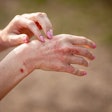Experts from Cardiff University, Cardiff and Vale University Health Board's Community Dental Service, and Swansea University have been awarded 1.1 million pounds ($1.7 million) by U.K.'s National Institute for Health Research to compare the effectiveness of two methods of preventing dental decay.
Despite an overall decline in dental decay in the U.K., 57% of 15 year-olds still currently require a filling or extraction, according to the researchers. Dental caries are also unevenly distributed and are closely linked to socioeconomic deprivation -- with a threefold difference in disease burden from most to least deprived communities.
In schoolchildren, dental decay most commonly affects the biting surfaces of molar teeth, according to Ivor Chestnutt, Ph.D., a dental public health consultant from the Cardiff University School of Dentistry who is leading the study.
Two methods of decay prevention technology are currently widely used by the National Health Service in the U.K.: pit-and-fissure sealants and fluoride varnish. Both treatments have been shown to be effective, yet there is little evidence to show which works best, which is most acceptable to children, and which offers the best value for money, the researchers noted.
"Although both of these treatments have been around for many years and have been shown to work, to know which works best and is most acceptable from the perspective of the children, their parents, the dental staff carrying out the treatments, and the schools in which the treatment will be delivered will be of tremendous value to the National Health Service," Chestnutt said in a press release.
The study, which starts in early 2011, will be conducted by Community Dental Service in Cardiff and Vale University Health Board, which deliver a primary school-based dental prevention program via mobile dental clinics.
The study aims to recruit more than 2,800 primary school pupils from schools from Communities First areas across South Wales. The children will be followed up for three years to investigate the comparable effectiveness of the two treatments, with results expected to be published in early 2015.
Copyright © 2010 DrBicuspid.com



















